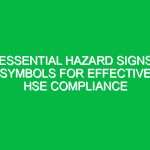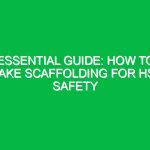# Preventing Cold Stress Hazards: Essential Tips for a Safe Workplace
Greetings Team,
Today, we are here to discuss a critical aspect of Health, Safety, and Environment (HSE) in the workplace – Cold Stress Hazards. As we enter the colder months, it’s essential to be aware of the risks associated with cold weather and how we can prevent them to ensure a safe working environment for all.
## Understanding Cold Stress Hazards
Cold Stress Hazards refer to the various dangers that employees may face when working in cold environments. These hazards can lead to serious health issues such as hypothermia, frostbite, and even death if not managed properly. It’s crucial to recognize the signs of cold stress and take preventive measures to mitigate these risks.
### Types of Cold Stress Hazards
#### 1. Hypothermia
Hypothermia occurs when the body loses heat faster than it can produce, causing a dangerously low body temperature. Symptoms include shivering, confusion, slurred speech, and drowsiness. In severe cases, hypothermia can be life-threatening.
#### 2. Frostbite
Frostbite is the freezing of skin and underlying tissues, usually affecting extremities like fingers, toes, nose, and ears. Symptoms include numbness, tingling, pale or blue skin, and pain. Severe frostbite can lead to permanent tissue damage.
#### 3. Trench Foot
Trench foot, also known as immersion foot, is a condition caused by prolonged exposure to wet and cold conditions. It can result in numbness, tingling, swelling, redness, and even tissue damage if not addressed promptly.
### Preventive Measures for Cold Stress Hazards
#### 1. Dress Appropriately
Wearing layers of clothing can help regulate body temperature and protect against cold stress. Make sure to wear insulated, waterproof, and windproof outer layers, along with thermal undergarments and moisture-wicking fabrics.
#### 2. Take Regular Breaks
Encourage employees to take frequent breaks in warm areas to prevent prolonged exposure to cold conditions. This allows the body to warm up and reduce the risk of cold stress.
#### 3. Stay Hydrated
Even in cold weather, it’s important to stay hydrated by drinking plenty of fluids. Dehydration can exacerbate the effects of cold stress on the body, so encourage regular water intake throughout the workday.
#### 4. Be Aware of Symptoms
Educate employees on the signs of cold stress, such as shivering, numbness, confusion, and fatigue. Encourage them to report any symptoms promptly and seek medical attention if necessary.
## Regulations and Standards
In accordance with OSHA guidelines, employers are responsible for providing a safe working environment free from recognized hazards, including cold stress. It’s essential to comply with regulations and standards to ensure the health and safety of all employees.
## Conclusion
In conclusion, preventing Cold Stress Hazards is crucial for maintaining a safe workplace during the colder months. By understanding the risks associated with cold weather, dressing appropriately, taking regular breaks, staying hydrated, and being aware of symptoms, we can effectively mitigate these hazards and ensure a safe working environment for everyone.
Thank you for your attention and commitment to safety. Stay warm and stay safe.
Remember, safety is everyone’s responsibility.
[End of Toolbox Talk]


